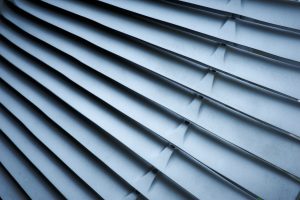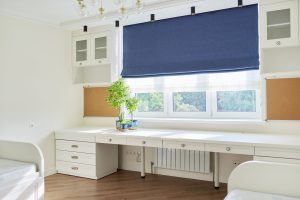Ever thought about how installing awnings can transform your outdoor space? Not only do they offer enhanced sun protection, but they also increase comfort and help save on energy costs. By shielding you and your furniture from harmful UV rays, awnings extend the life of your outdoor setup and make your space more enjoyable. Plus, with the added bonus of boosting property value and providing aesthetic appeal, they’re a practical investment. But what about the versatility and customization options that can perfectly match your needs? Let’s explore further.
Key Takeaways
– Awnings provide substantial UV protection, reducing skin cancer risk and premature ageing.
– Effective shading from awnings lowers indoor temperatures, decreasing cooling costs and energy consumption.
– Awnings shield outdoor furniture from sunlight, rain, and environmental damage, enhancing longevity.
– Motorised retractable awnings offer flexibility and convenience, optimising outdoor space usage.
– Awnings enhance visual appeal and property value with customizable design styles and colours.
Enhanced Sun Protection
Enhanced sun protection is one of the primary advantages of installing awnings on your property. Awnings provide substantial UV protection, which is essential for maintaining skin safety. By blocking harmful ultraviolet rays, awnings reduce your risk of skin cancer and prevent premature ageing caused by sun exposure.
When choosing an awning, consider fabrics specifically designed for UV protection. These materials can block up to 98% of UV rays, guaranteeing you and your loved ones can enjoy outdoor activities without the constant worry of sunburn or skin damage.
Proper installation is key to maximising sun protection. Make sure the awning is mounted at an angle that best shades your outdoor space throughout the day. A retractable awning offers flexibility, allowing you to adjust coverage as the sun’s position changes.
Maintenance is another vital aspect. Regularly clean the awning fabric to maintain its UV blocking capabilities. Dirt and debris can degrade the material, reducing its effectiveness.
Increased Outdoor Comfort
Installing awnings can greatly boost your outdoor comfort, transforming your patio, deck, or garden into a more enjoyable space.
With a variety of shade options available, you can tailor your awning to meet your specific needs, whether it’s blocking out harsh UV rays or providing a cooler environment for relaxation.
The right awning can profoundly enhance your outdoor living experience.
To maximise comfort, consider these key aspects:
- Material Selection: Opt for high-quality, weather-durable materials that can withstand extreme conditions, ensuring longevity and minimal maintenance.
- Adjustability: Choose retractable awnings to provide flexible shade options. This allows you to control the amount of sunlight and airflow, adapting to changing weather conditions.
- Installation Angle: Properly installing awnings at an angle can improve airflow, reducing heat buildup and enhancing overall comfort.
- Integration with Outdoor Features: Position your awning to complement existing outdoor features like seating areas or cooking stations, creating a cohesive and comfortable space.
Protects Outdoor Furniture
Awnings serve as an essential layer of protection for your outdoor furniture, shielding it from the damaging effects of sunlight, rain, and other environmental elements. By creating a barrier against UV rays, awnings greatly enhance furniture longevity. UV radiation can cause materials to fade, weaken, and deteriorate over time.
With an awning, you can maintain the vibrancy and structural integrity of your outdoor furnishings for years.
Weather resistance is another vital benefit. Awnings mitigate the risk of moisture damage by providing a shield during rain. Moisture can seep into cushions and wooden furniture, leading to mould growth and wood rot.
By installing an awning, you create a dry, protected zone that prevents these issues and reduces the need for frequent maintenance.
Moreover, awnings also guard against wind-blown debris, which can cause scratches and abrasions on delicate surfaces. For maximum protection, opt for awnings made from high-quality, weather-resistant materials like acrylic or polyester.
These fabrics offer superior durability and UV protection.
Energy Cost Savings
While awnings effectively protect your outdoor furniture, they also offer significant energy cost savings for your home. By reducing solar gain, awnings act as efficient shading solutions that can lower indoor temperatures. This means your air conditioning system doesn’t have to work as hard, resulting in reduced energy consumption and lower utility bills.
Here are four ways awnings contribute to energy cost savings:
- Reduced Solar Gain: By blocking direct sunlight, awnings minimise the amount of heat that enters your home through windows, maintaining a cooler indoor environment.
- Enhanced HVAC Efficiency: With less heat penetrating your home, your HVAC system operates more efficiently, reducing wear and tear and prolonging its lifespan.
- Lower Cooling Costs: Effective shading solutions can lead to a significant drop in cooling costs by reducing the need for constant air conditioning.
- Seasonal Flexibility: Retractable awnings allow you to adjust the shading based on seasonal changes, optimising energy savings year-round by letting in more sunlight during winter months.
Extended Living Space
Beyond just providing energy savings, extending your living space can be seamlessly achieved with the addition of awnings. By installing an awning, you effectively create an outdoor extension of your home’s interior, providing a versatile area for various activities.
Whether you’re hosting outdoor gatherings or seeking a quiet retreat, an awning offers the necessary shelter and comfort.
One of the key benefits of awnings is their exceptional weather protection. Awnings shield you and your outdoor furniture from harmful UV rays, sudden rain showers, and excessive heat. This means you can enjoy your outdoor space regardless of unpredictable weather conditions.
High-quality awnings are crafted from durable materials like acrylic or polyester fabrics, which offer long-term resilience against the elements.
For practical use, consider motorised retractable awnings, which offer flexibility and convenience. With the touch of a button, you can extend or retract the awning based on your needs, optimising the space for different occasions.
Additionally, incorporating side panels or screens can further enhance this extended living area by providing extra protection and privacy.
In essence, awnings transform your patio or deck into a functional, weather-resistant space, perfect for relaxation and entertaining.
Adds Aesthetic Appeal
In addition to expanding your living space, installing awnings greatly enhances the visual appeal of your home. By selecting from a wide array of design styles and colour options, you can tailor awnings to perfectly complement your home’s architecture and personal taste.
This customization not only creates a cohesive look but also imbues your outdoor space with a touch of sophistication.
When deciding on the aesthetic aspects of your awnings, consider the following factors:
- Design Styles: Choose from traditional, contemporary, or retractable awnings. Each style offers unique attributes that can harmonise with your existing décor.
- Color Options: Opt for colours that either blend seamlessly with your home’s exterior or provide a striking contrast. Consider neutral tones for a subtle effect or bold hues to make a statement.
- Material Selection: High-quality fabrics and materials guarantee durability while maintaining aesthetic appeal. Look for UV-resistant, waterproof, and fade-resistant options.
- Pattern Choices: Stripes, solids, and floral patterns can add a dynamic layer of visual interest. Match patterns to your outdoor furniture or garden elements for a unified look.
Boosts Property Value
Installing awnings can greatly boost your property’s value by enhancing both its functionality and curb appeal. When you add awnings, you’re not just investing in your immediate comfort; you’re making a long-term investment in your home’s marketability.
Awnings increase the usable outdoor space, making areas like patios and decks more functional year-round. This increased functionality translates to higher property appeal, which potential buyers will notice.
Consider the technical advantages: awnings provide shade, reduce energy costs by lowering indoor temperatures, and protect your outdoor furnishings from weather damage. These benefits contribute to a home’s overall efficiency and attractiveness, making it more appealing to prospective buyers.
Additionally, awnings can be a visually striking feature that differentiates your property from others on the market.
Practical tips for maximising this benefit include selecting high-quality, durable materials that can withstand various weather conditions and opting for designs that complement your home’s architectural style.
Proper installation is essential; poorly installed awnings can detract from your property’s appearance and functionality. By following these expert recommendations, you guarantee that your awnings are an asset, enhancing your home’s value both visually and practically.
Versatile and Customizable
Thanks to their versatility and customizable nature, awnings can be tailored to meet a wide range of needs and preferences. When considering adjustable designs, you can select between manual and motorised mechanisms, allowing you to control the amount of shade and sunlight. This feature is especially beneficial for optimising comfort and energy efficiency.
Additionally, the myriad of fabric options—ranging from acrylic to polyester—ensures you find the perfect match for your aesthetic and functional requirements.
Here’s how you can maximise the potential of your outdoor space with customizable awnings:
- Adjustable Pitch: Modify the angle of your awning to control sunlight exposure and improve water runoff during rainy conditions.
- Motorized Systems: Opt for automated retractable awnings for effortless operation and integration with smart home systems.
- Fabric Choices: Choose from water-resistant, UV-protective, and breathable materials based on your climate and design preferences.
- Additional Features: Incorporate elements like LED lighting or wind sensors to enhance functionality and safety.
Frequently Asked Questions
How Do Awnings Perform in Various Weather Conditions?
Awnings perform exceptionally in various weather conditions due to their awning durability and weather resistance. You’ll find that high-quality materials withstand strong winds, UV rays, and heavy rain, ensuring long-lasting performance and protection for your outdoor space.
What Materials Are Commonly Used for Outdoor Awnings?
Imagine a shield against the sun; common awning materials include acrylic, polyester, and vinyl. Fabric types impact durability, while installation styles vary from retractable to fixed, ensuring you choose the best fit for your space.
How Can I Maintain and Clean My Awnings?
To maintain your awning, use mild cleaning solutions and a soft brush for regular awning care. Rinse thoroughly to remove detergents. Inspect for damage and guarantee proper tension to prevent sagging and extend the awning’s lifespan.
Are There Any Eco-Friendly Awning Options Available?
Oh, you don’t want to save the planet with your awning? Look for eco-friendly options using sustainable materials like recycled fabrics. These awnings boost energy efficiency by reducing cooling costs, making them a smart, green choice.
How Difficult Is the Installation Process for Awnings?
Installing awnings isn’t too difficult if you’re handy with tools. DIY awnings come with instructions, but professional installation guarantees precision and longevity. Consider your skill level and the complexity of the project before deciding.
Conclusion
Installing awnings transforms your outdoor space into a sanctuary of comfort and efficiency. You’ll drastically cut energy costs and shield your outdoor furniture from relentless wear and tear. With unparalleled sun protection, you’ll practically eliminate the risk of sunburn. Plus, awnings extend your living space, adding both aesthetic charm and substantial property value. With so many versatile, customizable options, there’s no better investment for your outdoor area. Don’t wait—experience these benefits and more today!
















